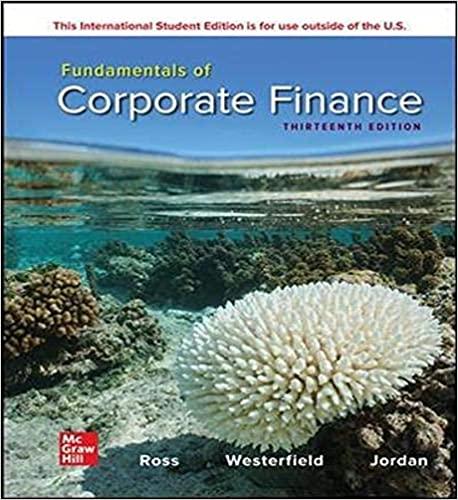Question
2. Hunter Corporation has the following investment opportunities: I. Machine A requires an initial investment of $10,000 and is projected to realize cash inflows of
2. Hunter Corporation has the following investment opportunities:
I. Machine A requires an initial investment of $10,000 and is projected to realize cash inflows of $4,000 in year 1, $6,000 in year 2, and $3,000 in year 3.
II. Machine B requires an initial investment of $16,000 and is projected to realize cash inflows of $9,000 in year 1, $6,000 in year 2, and $8,000 in year 3.
Hunter Corporation uses a hurdle rate of 15% when analyzing prospective investments. Assuming that these machines are mutually exclusive, the company would choose to invest in Machine A if it bases its selection on the
Select one:
A. internal rate of return method.
B. net present value method.
C. profitability index method.
D. payback method
3. Drummond Corporation is considering making an investment in Project A, which will require an initial cash outlay of $20,000. Project A is expected to generate cash inflows of $6,000 for year 1, $8,000 for year 2, $10,000 for year 3, and $7,000 for year 4. The firm's hurdle rate is 12%.What is the internal rate of return for Project A?
Select one:
A. 16.98%
B. 19.29%
C. 21.23%
D. 24.76%
4. If an investment project is determined to have a net present value (NPV) greater than zero, the internal rate of return (IRR) is
Select one:
A. less than the required rate of return.
B. greater than the required rate of return.
C. equal to the required rate of return.
D. indeterminate, since it depends upon the length of the project.
5. Churnham and Burnham, LLP is evaluating the purchase of a new computer system. System A will require an initial outlay of $100,000. Cash inflows are expected to be $10,000 at the end of year one, $20,000 at the end of year two, $30,000 at the end of year three, $40,000 at the end of year four, and $50,000 at the end of year five. System B will require an initial outlay of $50,000, with expected cash inflows of $10,000 at the end of year one, $20,000 at the end of year two, $15,000 at the end of year three, and $20,000 at the end of year four. The firm has a 10% required rate of return (the "hurdle rate"). If Churnham and Burnham, LLP makes its decision using the payback method, which computer system will it acquire?
Select one:
A. System A.
B. System B.
C. Neither System A nor System B.
D. Cannot be determined from the information provided.
6. Churnham and Burnham, LLP is evaluating the purchase of a new computer system. System A will require an initial outlay of $100,000. Cash inflows are expected to be $10,000 at the end of year one, $20,000 at the end of year two, $30,000 at the end of year three, $40,000 at the end of year four, and $50,000 at the end of year five. System B will require an initial outlay of $50,000, with expected cash inflows of $10,000 at the end of year one, $20,000 at the end of year two, $15,000 at the end of year three, and $20,000 at the end of year four. The firm has a 10% required rate of return (the "hurdle rate"). Based upon net present value, and assuming only one system is needed, which computer system should Churnham and Burnham, LLP acquire?
Select one:
A. System A.
B. System B.
C. Neither System A nor System B.
D. Cannot be determined from the information provided.
Step by Step Solution
There are 3 Steps involved in it
Step: 1

Get Instant Access to Expert-Tailored Solutions
See step-by-step solutions with expert insights and AI powered tools for academic success
Step: 2

Step: 3

Ace Your Homework with AI
Get the answers you need in no time with our AI-driven, step-by-step assistance
Get Started


